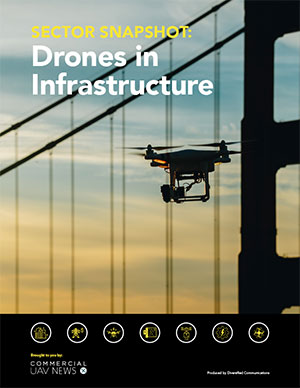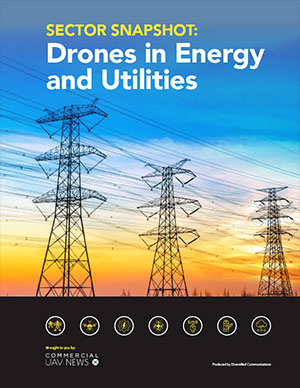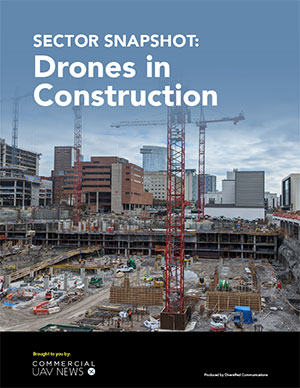On the third day of the 2025 Commercial UAV Expo, I had, for the second time in two days, the privilege of moderating a panel about an important aspect of the uncrewed aviation industry. In my introduction to the packed Summit Stage, I explained that drone-in-a-box (DIB) implementations are one of the few areas where traditional crewed aviation and drones have nothing in common. The concept of DIB is unique to uncrewed aviation and, as such, is uncharted territory for these pioneer companies to bring forth their designs and novel business models.
Three experts in DIB operations had the opportunity to make their case to the audience about how deploying drones autonomously and remotely will be revamped by the reality of Part 108, which will allow drones to fly beyond visual line of sight (BVLOS) and therefore open the door for the expansion of the DIB business.
We started with Achal Negi, part of the leadership team at FlytBase, who had an incredibly detailed presentation about the emergence of docking systems as a technology completely redefining drone service delivery.

“By enabling a shift to the Docked Drone-as-a-Service (DaaS) model that promises greater efficiency, reduced costs, and expanded operational capabilities, we are opening the door to new ways of using these uncrewed aircraft,” Negi said. “Limitations of traditional DaaS models include travel time and cost inefficiencies, on-site pilot requirements, training complexities, and the substantial overhead that comes with distributed operations.”
These limitations were outlined along with real-world examples that illustrated to the riveted audience how these factors have constrained growth and profitability despite clear value delivery. For 15 minutes, Achal gave example after example of autonomous drone deployments using FlyTBase technology.
Our second expert was Julian Ederleh, Marketing & Sales at Exabotix GmbH, a German company that specializes in DIB solutions for both multicopters and fixed-wing autonomous aircraft.

“Today I will cover the journey of creating an autonomous drone system focused on flight safety and EU (European Union) regulatory compliance for robust, repeated use,” Ederleh said.
He then described how technical and regulatory hurdles were overcome, leading to the 24/7 Exabotix DRONEPORT solution, which, according to his data, offers higher data frequency and a safer, more efficient, and cheaper approach to infrastructure monitoring.
“Exabotix has been developing drones for industrial applications since 2012,” Ederleh continued. “Since 2020, the focus has been on fully integrated drone systems for the automated monitoring of energy plants, power lines, industrial sites, and more. Our solutions reduce effort and costs, increase flight frequency, and deliver precise image data – reliably, GDPR-compliant (General Data Protection Regulation), and independent of third-party providers.”
Then it was Aaron Zhang’s, Founder and CEO of A2Z Drone Deliveries, Inc., turn with a presentation titled “Nonstop Infrastructure Oversight with Multi-Use Drone Dock Network”.
“We all started in DIB solutions with complicated contraptions that had lots of moving parts, and eventually learned that all this technology exposed to the elements day after day tends to fail. So we decided to design a solution without moving parts,” Zhang said. “Now we’ve managed to deploy the world’s first multi-use drone dock network in China with great results.”

In his presentation, Zhang showed actual footage of the A2Z Drone Deliveries’ ingenious platform, which accommodates four simultaneous drone landings and is expanding the reach of drone-borne services in a remote village in China by simultaneously conducting autonomous patrol of 1,800 square kilometers and assisting first responders with search and rescue, while supporting the delivery of on-demand retail orders and medical deliveries.
“The weatherproof AirDocks automate charging and enable nonstop missions with endless range,” Zhang said. “We operate multiple Longtail drones over a shared network of AirDocks to support multiple services simultaneously. Combine portable ground docking stations with elevated multi-drone AirDocks to bring diversified unmanned aerial fleet services to large regions. The customizable Longtail aircraft can support last-mile drone delivery, repeatable autonomous patrol and linear inspection missions, ship-to-shore drone transport, or any UAV-born services desired.”
After Aaron’s presentation, we opened the microphone to the audience for a Q&A session that started with an animated discussion with various members of the audience about the practical transformation underway in the world of autonomous drones. In that exchange, all four members of the panel articulated not only the state-of-the-art in DIB technologies but also the operational, engineering, and strategic challenges that lie ahead.
As organizations increasingly recognize the metamorphosis of drones as they move from mere tools to foundational infrastructure, the insights from this panel will help inform the next wave of innovation, integration, and market growth in autonomous aerial workflows in drones deployed remotely in sometimes dangerous and isolated locations. Given current regulations, it might be a great point to start testing BVLOS operations.















Comments